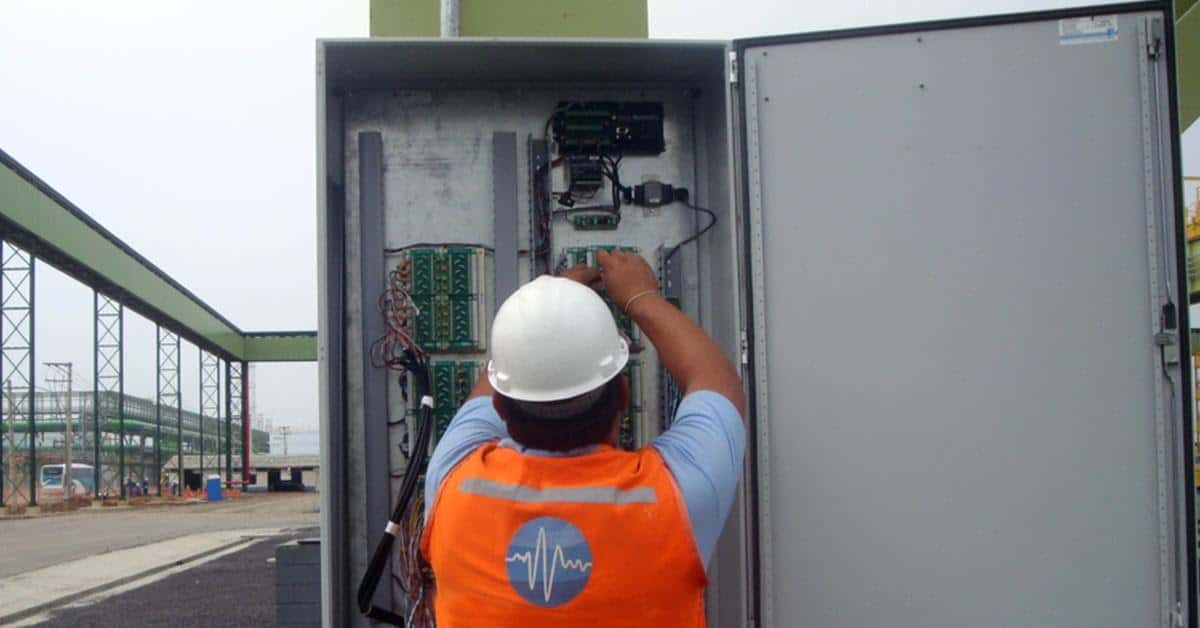
Civil Engineering is a complex and interesting field. When it comes to the specific arena of geotechnical engineering, monitoring, and Instrumentation, various sensors are employed to get the work done. In this article, we are going to discuss data loggers, their various types, and how they are used in the geotechnical field.
To put it simply, data loggers are simply devices that are interfaced with several other instruments or sensors to log data in real-time. While these devices are used in various fields, their application in the geotechnical field is of utter importance.
Large construction sites or even civil engineering structures require continuous monitoring to maintain their health. For the overall safety of the structure and those living within the zone of influence, geotechnical monitoring plays a crucial role. A variety of monitoring instruments and sensors are installed at these places to record parameters such as humidity, pressure, deformity, etc.
As these sensors do their job, the Data loggers are responsible for collecting and recording data from the installed sensors for an assigned duration, at predefined intervals, without any physical/human intervention.
Let’s take a look at the data loggers in detail along with their types, working principles, and more.
What is a Data Logger?
A data logger is usually a compact, battery-powered device and carries a digital processor. Data loggers are interfaced with geotechnical sensors to log data from them automatically.
Once programmed, commissioned, and activated, the data logger can be left unattended to measure and record data from sensors. It allows for regular structural health monitoring to minimize risk.
Let’s take a look at the data logger working principle.
How does a Data Logger work?
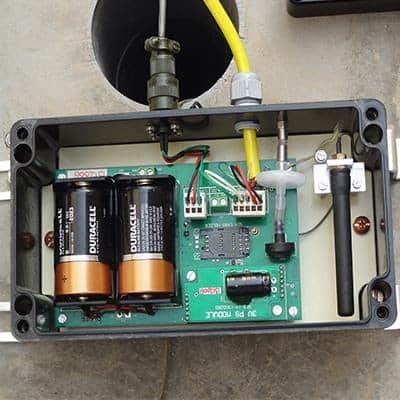
Data loggers are connected to the sensors through cables. A single data logger can be interfaced with multiple sensors depending on the availability of the channels.
After programming, these data recorders are left unattended to record data from the sensors and store it in their internal non-volatile memory. The device can log multiple parameters from the sensors along with current time, date, and battery voltage.
The data stored in the memory of data loggers is transmittable through telemetry or using a laptop/PC.
Now that you’re aware of what is a Data Logger and its working principle, let’s take a look at its applications.
Read More: Data Loggers: What is it, Types, Applications & How it Works?
What is the data logger used for?
Data loggers have a wide range of applications, especially in the geotechnical field. They are used for the following purposes:
- Large construction sites require the installation of sensors such as piezometers, strain gauges, tilt meters, extensometers, etc. These sensors are used to monitor and measure several parameters affecting the structure. Data loggers are interfaced with these sensors to record data and display it at any remote location along with specified units, date, time, and battery voltage.
- Data recorders are extensively used to monitor groundwater levels as well as rainfall to keep a check on natural resources.
- They are used along with the weather stations to monitor several environmental factors.
- Unattended nuclear power plant monitoring to avoid fatal accidents such as chemical leakage.
- Comprehensive tunnel monitoring for the long-term safety of the tunnel, to study the behavior of the tunnel over time, especially concerning the rheological behavior of the rock mass and obvious changes in the fault zones, walled sections, inflow, etc. Several instruments such as tilt meters, strain gauges, extensometers, etc. are installed on the inner lining of the tunnels to monitor deformities if any. The data from these sensors is continuously logged by a data logger and stored in its internal memory.
- Monitoring the deformation of land and surrounding areas during deep excavations. Excavation in soft ground induces ground movement which imposes a threat to nearby sensitive structures in the zone of influence. Hence, deep excavation risk assessment and foundation crack monitoring are crucial at all levels.
Types of Data logger:
We have already defined data loggers and explained their application in the geotechnical field. Let’s now have a look at the types of data loggers.
1. Bluetooth Data Loggers: The Bluetooth data recorder is a simple wireless data logger. It measures, records, and transmits data wirelessly to computers/laptops within a specified range say, 30 meters. These data loggers work on Bluetooth connectivity.
2. USB Data Loggers: USB data loggers record and store the data in their internal memory. The data recorded can be retrieved on a PC or laptop using the USB cable interface. The same USB is used to charge up the data logger.
3. Web-Based Data Loggers: The web-based data loggers allow for remote data retrieval using the Internet, Wi-Fi, or GPRS. Encardio Rite deals with web-based data loggers. The Encardio’s range of data recorders include:
Model ESDL-30 Data logger for SDI-12 Interface Sensors
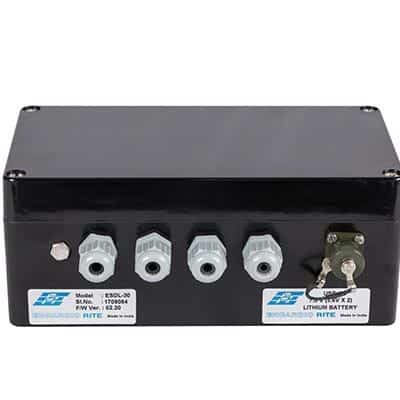
The Encardio Rite’s Model ESDL-30 multi-channel data logger is designed to record data from sensors with the SDI-12 interface. Any sensor with an SDI-12 interface can be connected to ESDL-30 e.g. based on vibrating wire, resistance strain gauge MEMS technology, etc.
ESDL-30 is a robust vibrating wire data logger that finds its application in a variety of fields to provide accurate and reliable data. It features a wide operating temperature range, dependable stand-alone operation, low power consumption, compatibility with many telecommunication options, and flexibility to support a variety of measurements as well as control applications. It is of durable construction and very suitable for unattended applications.
ESDL-30 data logger is connectable to a large number of sensors with an SDI-12 interface. The data logger is fully compatible with all measurement command signals as per SDI-12 standard. It can be programmed to take readings from 5 seconds to 168 hours in linear mode.
However, the number of measurements taken per day should be kept minimum to prevent power drain from the batteries.
The SDI-12 serial digital interface requires a three-conductor cable to connect the sensors to the data logger. The advantage of the instrument is that only a single 3-conductor cable is required to interconnect all the sensors and the data logger to a serial bus.
SDI-12 is a multi-drop interface that can communicate with multi-parameter sensors. Multi-parameter means that a single sensor may return more than one measurement, like displacement and temperature from vibrating wire displacement sensors.
All the data recorded by the vibrating wire data logger is stored along with the current date, time, and battery voltage in its internal non-volatile memory.
Data retrieval and transmission
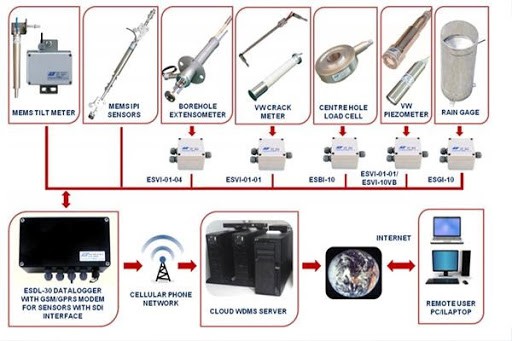
The data logged by the digital data loggers is retrievable at any remote location through a dedicated web-based cloud server. There are a couple of methods to retrieve or transmit data to a distant location:
Telemetry through GSM/GPRS modem
In a location covered by any GSM/GPRS service provider, the data from the automatic data logger can be transmitted remotely to a PC at a central location. The user will need to arrange a data SIM card for each data logger.
Readout/data retrieval using a laptop PC
The logged data from the data logger in the field can be directly downloaded to a laptop/PC. Data can be transferred to the central PC or server from the laptop using either a USB pen drive or through the Internet.
Encardio Rite offers a public dedicated cloud-based web monitoring service to its clients for retrieving data from the ESDL-30 data logger. The data retrieved is archived and stored in a SQL database. The same data is represented in the form of tables and graphs for easy understanding.
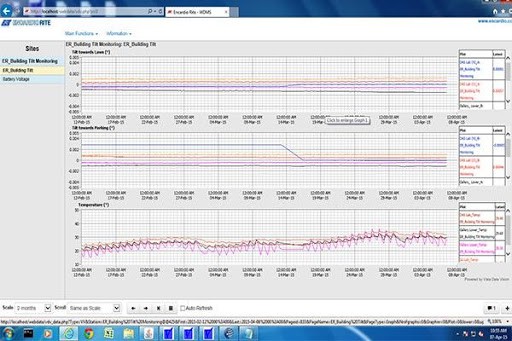
The information logged in can be accessed only by authorized personnel who can log in to their site using the supplied login ID and access password from anywhere in the world.
Watch the video below to learn the sensor configuration of the ESDL-30 data logger with ESDL-30 UNI application software:
Specifications of Model ESDL-30
| Input | Sensor with SDI-12 signal interface |
| No. of channels | 3 |
| No. of sensors/channel | 61 |
| Scan/upload interval | 5 seconds to 168 hours |
| Memory capacity | Flash Memory (64-Mbit); 2 Million data points |
| Data output format | CSV text file. Can be easily imported into many third-party applications like Microsoft® Excel |
| SDI-12 version | Version 1.3 |
| Communication port | RS-232 (Standard) 115 kbps |
| Temp. measurement range | -20 to +70°C with 0.1°C resolution |
Operating temperature range | -30° to 70°C |
| Humidity | 100 % |
| Power supply | 2 x D size 3.6 V/19 Ah Lithium cells, or 2 x D size 1.5 V Alkaline high power cells, or 12V SMF battery chargeable from AC mains or solar panel |
| Housing | Corrosion-resistant weatherproof enclosure |
| Antenna (in telemetry option) | Built-in or separately mounted antenna |
| Dimensions LxWxH | 220 x 140 x 90 mm |
Model ESCL-12VT Single Channel Data Logger for Vibrating Wire Sensors

Encardio Rite Model ESCL-12VT Single Channel Data Logger is curated for the automatic collection of data from any vibrating wire sensor equipped with an integral thermistor. The telemetry option allows you to send the data to a cloud/private server with the help of an in-built GPRS/GSM modem at specified intervals. The interval in between can be as quick as 5 minutes.
The combination of automatic collection and wireless transmission of data assists in significantly diminishing the field costs and helps to provide easy access to near real-time data with set alarms and warning signs.
The Single Channel Data Logger is equipped with a capability of two-way communication. This further attempts to lower the field costs as it provides remote access to configure, receive system status updates and carry out maintenance or diagnostics and preventive actions from the office itself. You’re no longer obliged to visit the site after installation.
Coming to The application of Model ESCL-12VT Data Logger is found in many areas of the geotechnical field. It helps to impart accurate and reliable information from vibrating wire sensors along with a wide operating temperature range, dependable standalone operation, and low power consumption. It is also very compatible with many telecommunication options and provides enough flexibility to support a variety of measurement and control applications. The onboard 5-pin connector is used for rapid sensor connection, whereas the durable construction makes it well-suited for unattended applications.
Specifications of Model ESCL-12VT
| Input | Any vibrating wire sensor with an inbuilt thermistor |
| Measuring Range | VW frequency range 400-6000Hz; Temperature: Thermistor type, Dale 1C3001-B3, temperature range -40 to +100°C |
| Accuracy | Frequency: ± 0.01 % of reading Temperature: ± 0.1°C (excluding sensor inaccuracy) Real-time clock: ± 1 minute/month |
| Resolution | Frequency: 0.001 Hz Temperature: ± 0.01°C Real-time clock: 1 second |
| Scan Interval | 5 seconds to 168 Hours |
| Data Upload Schedule | 5 seconds to 168 Hours |
| Remote configuration & data retrieval | Datalogger can be configured remotely by 2-way telemetry using 3G/4G cellular network |
| Operating temp. range | – 30 to 70ºC |
| Battery Backup | >5 Years with 7.2 V Lithium Battery (with 4 scans/day and 1 upload/day) >3 Years with 3 V Alkaline Battery (with 4 scans/day and 1 upload/day) |
Model ESCL-10VT Single Channel Data Logger for Vibrating Wire Sensors
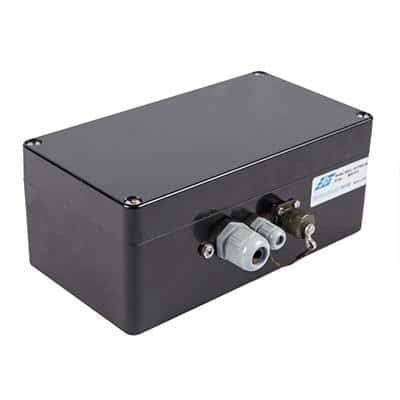
The Model ESCL-10VT single-channel vibrating wire data logger is designed to monitor a single vibrating wire sensor (including temperature) such as a piezometer, pressure sensor, and crack meter or displacement transducer. It can make data logging rain levels quite easy.
The single-channel data logger can additionally monitor barometric pressure and has provision to monitor rainfall using a tipping bucket rain gauge. The barometric data logger has Windows-based application software with features that allow the user to set the sensor calibration coefficients, recording intervals, data logger or borehole code (identification tag numbers), sensor serial number, real-time clock time, etc. conveniently.
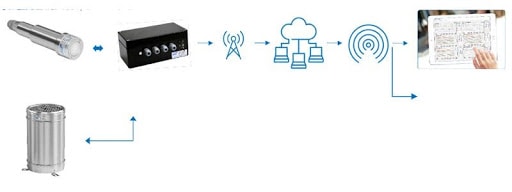
The user can monitor readings and GPRS signal strength for diagnostic purposes. The user can also start or stop the scan and can manage data files, download data from the data logger, perform data correction, and save the data files.
Groundwater level monitoring with ESCL-10VT data logger
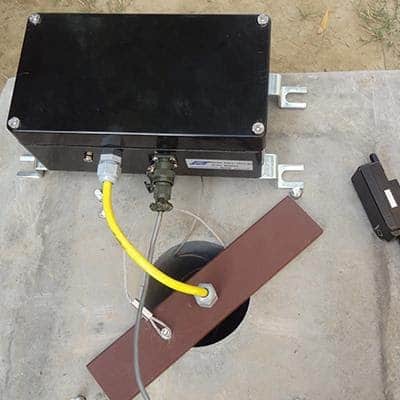
The most common use of the ESCL-10VT data logger is for online monitoring of water levels. The water level/table is monitored by using a high-accuracy fluid pressure sensor installed at a depth below the minimum expected water level.
A thermistor is incorporated into the sensor for the measurement of water temperature. The sensor is connected to the data logger for automatic collection of data. The recorded data is then transferred by the data logger to a remote server/cloud server.
The groundwater data logger transfer device has an inbuilt barometric sensor which allows the water level to be corrected for barometric pressure variation. The use of a barometric pressure sensor eliminates the apparent variation in water level due to variations in atmospheric pressure. The system provides the correct value of water level along with barometric pressure and temperature to the user.
Water level/table reading from a pressure sensor is dependent on the specific gravity of water at that location. For example, if the specific gravity is 1.08, the pressure sensor will give an 8 % higher output as compared to normal water which has a specific gravity of 1.0.
In coastal areas or in water with high dissolved solid content, the specific gravity of water will have a value higher than 1.0. The measured value of specific gravity must be entered in the data logger so that it can provide the corrected value of the water level/table.
The water pressure data loggers measure the output from the absolute and barometric pressure sensors as well as temperature and calculate the pressure in terms of the water column after correcting for the measured barometric pressure and water density. The data is stored, together with the current date, time, and battery voltage, as a data record in the internal non-volatile memory of the data logger.
Rainfall monitoring with ESCL-10VT data logger
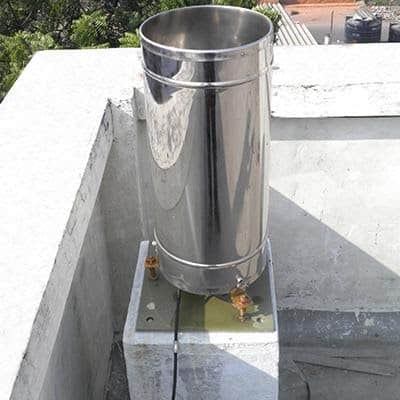
ESCL-10VT single channel data logger has provision to attach model ERG-200/ERG-201 rain gage for simultaneous monitoring of rainfall along with the water level/table monitoring. This helps in correlating the water table data with the rainfall data.
The data retrieval and transmission process of the ESCL-10VT is similar to that of the Model ESDL-30 data logger.
Specifications of Model ESCL-10VT
| Input | Pressure sensor |
| Resolution | 18 bits (better than 1 mm for a 70 m WC sensor) |
| Temperature measurement range | -20 to +70°C with 0.1°C resolution |
| Logging interval | 5 seconds to 168 hours |
| Memory capacity | 8 MB Flash RAM. Can store 3,145,728 data points |
| Data output format | CSV text file. Can be easily imported into many third-party applications like Microsoft® Excel |
| Communication port | One RS-232 serial port. Interface cable for connecting to USB 2.0 port supplied as standard |
| Operating temperature range | – 30 to 70ºC |
| Power supply boxed version (BX) | 2 x D size 3.6 V/19 Ah Lithium cells, or 2 x D size 1.5 V Alkaline high power cells, or 12 V SMF battery chargeable from solar panels, or 12V SMF battery chargeable from the AC mains |
| Housing | Box: Weather-proof enclosure Cylindrical: Corrosion-resistant stainless steel, AISI grade 316L. |
| Dimensions (BX) (WxLxH) | 120x 220 x 91 (mm) for box version with suffix BX |
| Humidity | 100 % |
| Antenna (In telemetry option) | Quad Band GSM/GPRS/ EDGE, 850/800/1800/1900 MHz |
| Modem (in telemetry option) | Built-in or separate mounted antenna available |